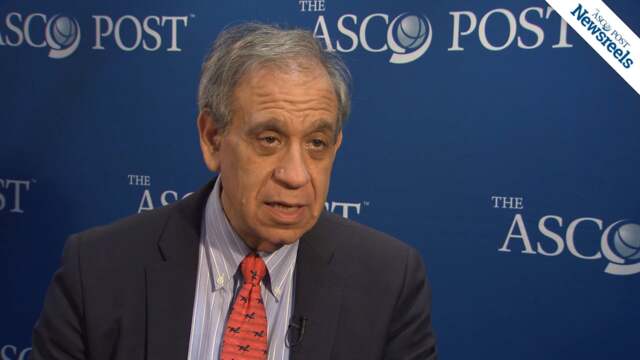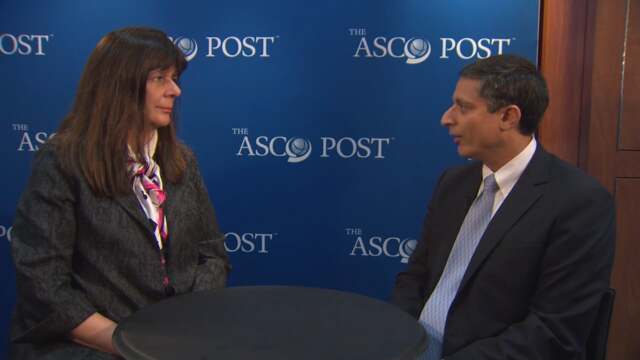Jonathon Cohen, MD, and Sagar Lonial, MD, on DLBCL: Results of the CALGB/Alliance 50303 Trial
2016 ASH Annual Meeting & Exposition
Jonathon Cohen, MD, and Sagar Lonial, MD, both of Emory University, discuss study findings on R-CHOP vs DA-EPOCH-R and molecular analysis of untreated diffuse large B-cell lymphoma (Abstract 469).
Martin Schrappe, MD, of Christian-Albrechts University Kiel, discusses study findings on reduced intensity delayed intensification in standard-risk patients defined by minimal residual disease in childhood acute lymphoblastic leukemia (Abstract 4).
Marie Bleakley, MD, PhD, of Fred Hutchinson Cancer Research Center, discusses data on using naive T-cell depletion of peripheral blood stem cells, which led to very low rates of chronic graft-vs-host-disease and high survival (Abstract 668).
Joshua Brody, MD, of the Icahn School of Medicine at Mount Sinai, summarizes important data on passive and active immunotherapy (Abstracts 1213, 1214, 1215, 1216, 1217, 1218).
Andrew D. Zelenetz, MD, of the Memorial Sloan Kettering Cancer Center, discusses novel treatments for chronic lymphocytic leukemia, touching specifically on the Gilead 115 trial.
Brenda M. Sandmaier, MD, of Fred Hutchinson Cancer Research Center, and Sagar Lonial, MD, of Emory University, discuss study findings on sirolimus combined with mycophenolate mofetil and cyclosporine to improve prevention of acute graft-vs-host-disease after unrelated hematopoietic cell transplantation (Abstract 506).





